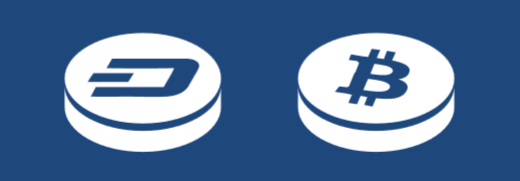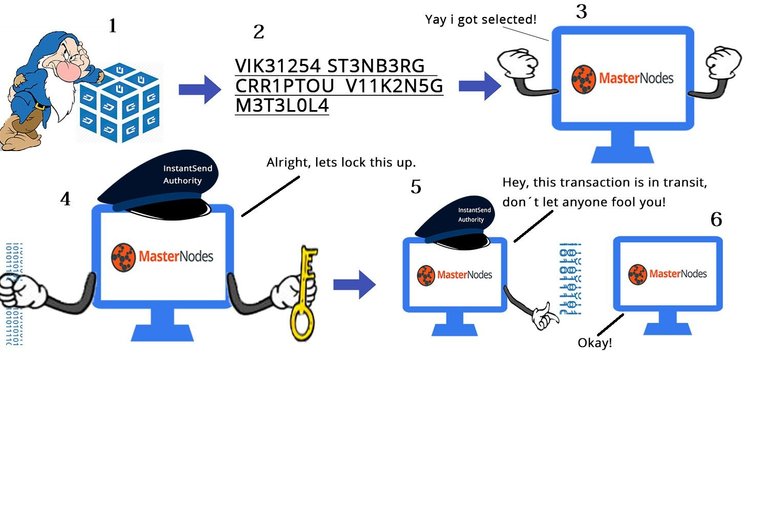 (InstantSend & PrivateSend Explained)
(InstantSend & PrivateSend Explained)
Welcome to my first post in a new blog series where i will discuss the technology behind some of the most used crypto-coins in the market today. I will try and explain as beginner-friendly as possible and i hope you get some value from it.
Lets start with one very interesting "new" instant & anonymous payment method called DASH.

So what exactly is  ?
?
Well the easy answer would be that it´s simply digital cash.
You have probably already heard of DASH as it currently hold the title of one of the top 10 most popular alt coins, with a daily market volume of about $25,475,200.

DASH was funded by a man named Evan Duffield who created the protocol in 2014 and has since then gained a crazy amount of interest from investors.
The community is strong and regular updates are coming from the DASH HQ.
Dash does not differ a lot from Bitcoin in its mission to offer a fast, cheap and decentralized way to manage funds. To achieve this they have several special functions, two of these PrivateSend and InstantSend will be discussed further.
PrivateSend will blur and obscure the sender of a transaction, making it fully anonymous, while InstantSend offers instant transactions without having to wait for sometimes very long block confirmations.
The Protocol of  explained!
explained!

PrivateSend is a function which DASH users can use to further hide their transactions when using DASH. The technology behind it basically takes a lot of different transactions of similar sizes to then "mix" them together, totally obscuring what funds are from what address.
Lets break down the process further.
When you hit your PrivateSend button in your wallet and send any amount of DASH to another address, the first thing that happens is that your transactions are then split into relevant denominations(0.1, 1, 10). These denominations of your transaction is then handled by the masternodes in the system, matching the denominations to other users transactions that are using PrivateSend.
After a masternode has matched several denominations together a mixing process will begin. This mixing process will completely obscure the funds making the transaction anonymous. It does require multiple mixing´s before the process is complete though with every turn of mixing being called a "round".
For every round of mixing special "change addresses" are used which basically sends your denominations to your own wallet using a different address.
Also worth to note is that the masternodes never have direct access to your funds but rather they only work as a middleman, broadcasting your request to mix a certain amount of dash and then handling the process when a counterpart is found. This way the system is kept trustless and secure as it should.
PrivateSend is limited to 1000 of these change addresses at any one time but will create more after they are used up as long as you have automatic backup enabled in your wallet.
Also, the more coins you want to mix and if you want to be total secure and anonymous, the process will take much longer as it will require multiple matching´s and mixing´s (still not long though).

One of the most exciting features of DASH in my personal opinion is the function called InstantSend. InstantSend will do exactly what it sounds like, it will enable you to send DASH instantly to another peer.
Before we break down the process of how instantsend works in the network one note is that this technology will enable digital cash into the real world in a real effective way. It will make merchants being able to recieve payments instantly by a customer, making DASH one of the first entries into the "real life" world and not just the digital one.
But okay enough text, give us a graphic of how the process works... please?
Yes okay i photo-shopped a picture for the lazy readers out there.
Okay so this is what your looking at
- 1 Miner finds a DASH block
- 2 Same miner gets a "winning" hash appointed.
- 3 The same hash will then select 1 out of 10 random masternodes in the network to then delegate that masternode to be an InstantSend Authority.
- 4 The masternodes delegated InstantSend authority will then monitor the network for instantsend transactions, grab them and lock them up in the network as pending transactions.
- 5 The InstantSend authority will then broadcast this message to the other masternodes in the network, preventing a double-spend dilemma.
All these steps are done under 1 second, in effect creating an trustless and instantaneous payment solution.

Concluding
I hope you enjoyed my first installment to help everyone understand the technology behind the crypto-coins out there, this was just part 1 of DASH and i will continue to explain the features of DASH in the next Crypto Coins Tech-Profile.
Full Steem ahead friends! // CryptoViking
Sources
Information:
3: My brain.
1: https://dashpay.atlassian.net/wiki/display/DOC/Site+map
2: https://www.dash.org/forum/
All images except the last one is taken from: https://www.dash.org/graphics/ and https://dashpay.atlassian.net/wiki/display/DOC/Marketing+Materials
I understood that the private send and instant send work as extensions to the protocol. I was wondering, suppose that all users are to make use of the instantsend but some users want to use privatesend while others don't want to use privatesend, is it possible to implement instantsend within the protocol itself? I am currently working on something like like a mathematical tree of rules so that some fundamental rules are observed by all, the trunk and other rules are optional, the branches. And, I was looking into blockchain applications. Because Dash offers services, I was curious to know the computational possibilities.
Which Dash supporting mobile wallets support InstantSend?